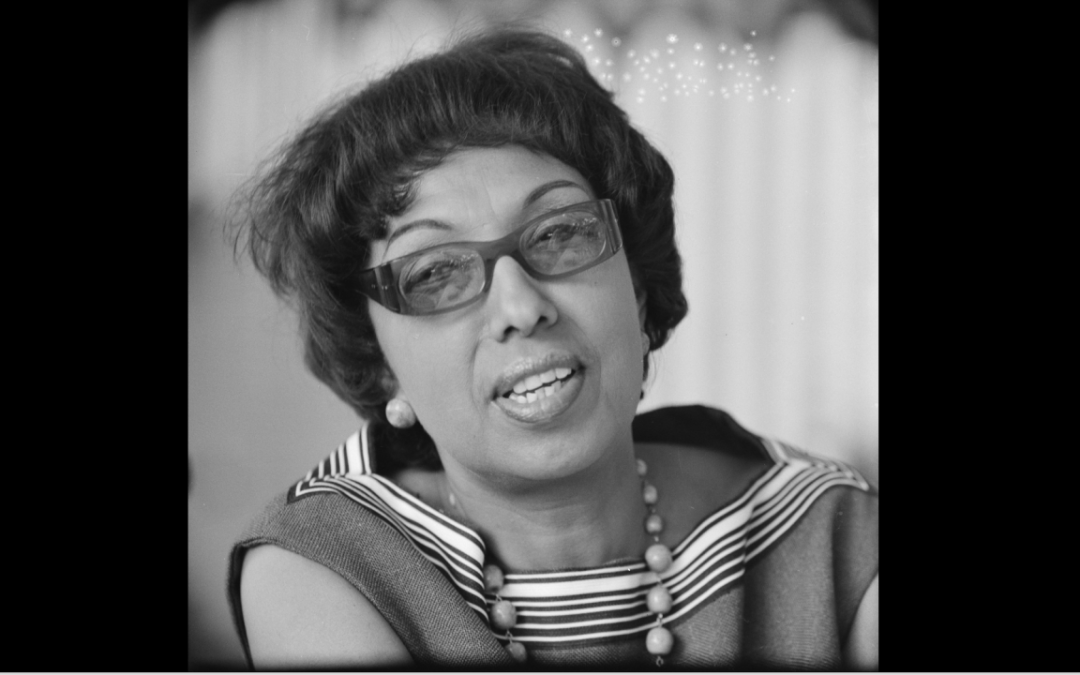by
_____
We think of Josephine Baker as the exotic dancer, stage performer, and movie star who enchanted audiences across Europe.
But on this day in 1952, she spoke from her heart to the people of her hometown, St. Louis. It was a bittersweet moment.
Baker was born in St. Louis in 1906. Her father was a vaudeville performer who abandoned the family, leaving her mother, a washwoman, to struggle. The family often went hungry, and at times Baker would scavenge for food in garbage cans.
At age eight, she went to work as a servant for wealthy people, and later got a job as a waitress. Sometimes she would dance on street corners for money. Soon she was dancing for local vaudeville shows, and when her troupe was booked into a New York City club, she left town for good.
One opportunity led to another, and by age 19 she was performing at the Théâtre de Champs-Élysées in Paris.
Baker swiftly became one of the biggest stage names in Europe — slithering across the stage in feathered outfits, starring in the movies, making records.
During WWII, she became a French Resistance agent, and later a civil rights activist.
In 1951, Baker was invited back to the US for a booking at the Stork nightclub in Miami. But she refused to perform there until the owners agreed to desegregate the audience.
That sold-out run led to a national tour, culminating in an appearance in Manhattan, where she rode in the back of a convertible as a 27-car motorcade moved down Seventh Avenue in Harlem. Tens of thousands of people packed the streets, upstairs windows, and fire escapes to get a glimpse of her.
On February 3, 1952, the fabulously rich and famous Josephine Baker finally returned to her hometown of St. Louis. Her memories were dark.
At the Kiel Auditorium downtown, she told the audience about her childhood struggles in the slums, made more difficult by racial division and violence.
We children stood huddled together in bewilderment, not being able to understand the horrible madness of mob violence.
She recalled how, when she was 11, labor and race-related violence broke out in East St. Louis. From late May to early July 1917, an estimated 40 to 250 African-Americans were murdered by white mobs. Another 6,000 were left homeless.
Baker recalled standing on the west bank of the Mississippi watching the glow of burning homes lighting the sky.
“We children stood huddled together in bewilderment,” she told the audience, “not being able to understand the horrible madness of mob violence — but here we were hiding behind the skirts of grown ups frightened to death with the screams of the Negro families running across this bridge with nothing but what they had on their backs as their worldly belongings.”
Let us stop saying white Americans and colored Americans, let us try once and for all saying . . . Americans.
For Baker, the hometown she left behind had become a symbol of “fear, humiliation, misery and terror.”
You can read the entire speech here — on the Speaking While Female Speech Bank. And you can watch a wonderful 2018 documentary of her life, “Josephine Baker, The Story of An Awakening.” Here’s the trailer.
Baker’s parting words for her audience were hopeful:
“Let us stop saying white Americans and colored Americans, let us try once and for all saying . . . Americans. Let human beings be equal on earth as in heaven.”
(Photo: Nijs, Jac. de / Anefo)
© Copyright 2021
________________________________
Want to talk? Reach me at dana@danarubin.com




